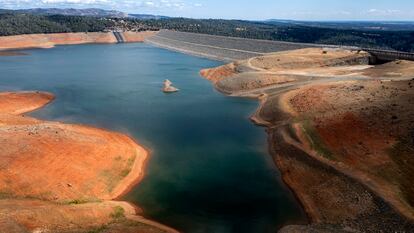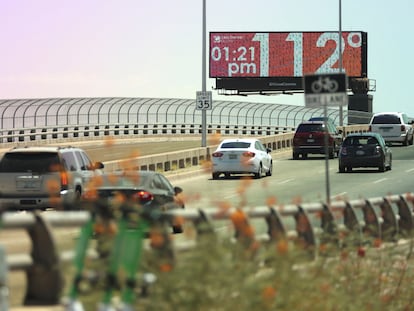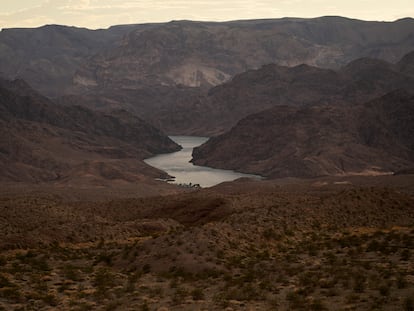California cities and farms will get 10% of requested state water supplies when 2024 begins
Much of the state’s water supply comes from snow that falls in the mountains during the winter and enters the watershed as it melts through spring

California water agencies serving 27 million people will get 10% of the water they requested from state supplies to start 2024 due to a relatively dry fall, even though the state’s reservoirs are in good shape, state officials said Friday.
The state’s Department of Water Resources said there was not much rain or snow in October and November. Those months are critical to developing the initial water allocation, which can be increased if conditions improve, officials said.
“California’s water year is off to a relatively dry start,” Karla Nemeth, director of the Department of Water Resources, said in a statement. “While we are hopeful that this El Niño pattern will generate wet weather, this early in the season we have to plan with drier conditions in mind.”
El Niño is a periodic and naturally occurring climate event that shifts weather patterns across the globe. It can cause extreme weather conditions ranging from drought to flooding. It hits hardest in December through February.
Much of California’s water supply comes from snow that falls in the mountains during the winter and enters the watershed as it melts through spring. Some is stored in reservoirs for later use, while some is sent south through massive pumping systems.
The system, known as the State Water Project, provides water to two-thirds of the state’s people and 1,172 square miles (3,035 square kilometers) of farmland. The Metropolitan Water District of Southern California, which services Los Angeles and much of Southern California, relies on the state for about one-third of its water supply.
California officials make initial water allocations every year on Dec. 1 and update them monthly in response to snowpack, rainfall and other conditions.
This year’s allocation, while low, is still better than in recent years when the state was in the depths of a three-year drought. In December 2021, agencies were told they would receive no state supplies to start 2022, except for what was needed for basic health and safety. That allocation eventually went up slightly.
A year ago, the state allocated 5% of what agencies requested. By April, though, the state increased that allocation to 100% after a drought-busting series of winter storms that filled up the state’s reservoirs.
Currently, most of the state’s reservoirs are above average, including Lake Oroville, the agency’s largest.
Adel Hagekhalil, general manager of the Metropolitan Water District of Southern California, said allocations will hopefully increase, but there’s no counting on it and the state is wise to proceed with caution.
“We must be prepared for the possibility that these dry conditions will continue,” Hagekhalil said in a statement.
Sign up for our weekly newsletter to get more English-language news coverage from EL PAÍS USA Edition
Tu suscripción se está usando en otro dispositivo
¿Quieres añadir otro usuario a tu suscripción?
Si continúas leyendo en este dispositivo, no se podrá leer en el otro.
FlechaTu suscripción se está usando en otro dispositivo y solo puedes acceder a EL PAÍS desde un dispositivo a la vez.
Si quieres compartir tu cuenta, cambia tu suscripción a la modalidad Premium, así podrás añadir otro usuario. Cada uno accederá con su propia cuenta de email, lo que os permitirá personalizar vuestra experiencia en EL PAÍS.
¿Tienes una suscripción de empresa? Accede aquí para contratar más cuentas.
En el caso de no saber quién está usando tu cuenta, te recomendamos cambiar tu contraseña aquí.
Si decides continuar compartiendo tu cuenta, este mensaje se mostrará en tu dispositivo y en el de la otra persona que está usando tu cuenta de forma indefinida, afectando a tu experiencia de lectura. Puedes consultar aquí los términos y condiciones de la suscripción digital.
More information
Archived In
Últimas noticias
Most viewed
- Oona Chaplin: ‘I told James Cameron that I was living in a treehouse and starting a permaculture project with a friend’
- Sinaloa Cartel war is taking its toll on Los Chapitos
- Reinhard Genzel, Nobel laureate in physics: ‘One-minute videos will never give you the truth’
- Why the price of coffee has skyrocketed: from Brazilian plantations to specialty coffee houses
- Silver prices are going crazy: This is what’s fueling the rally










































